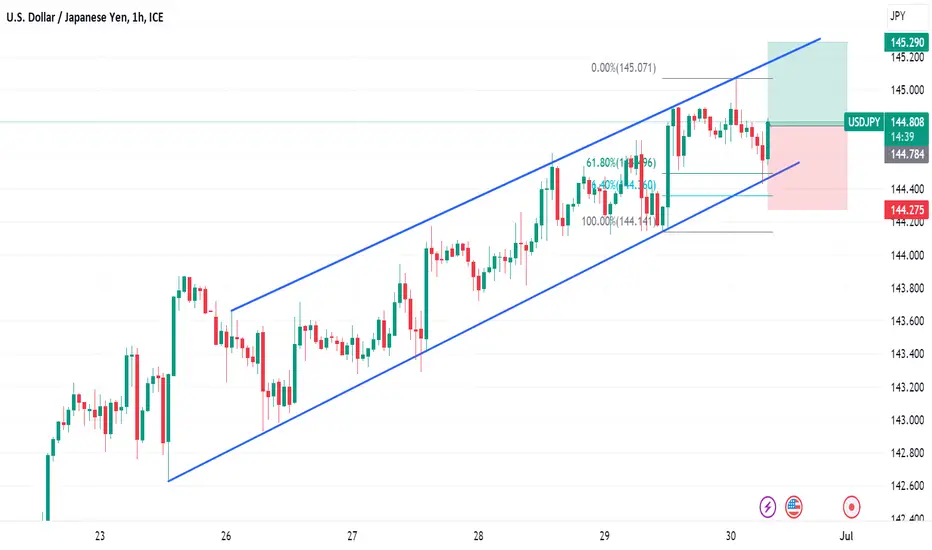The yen has been a consistent underperformer over the past year, coming under pressure as the divergence of inflation between Japan and the West grows. That has obvious consequences for monetary policy, and even the transition to a new Governor at the BoJ failed to shift the dovish rhetoric that places Japan in a very different position given the rampant rate hikes seen elsewhere. The benefit from a currency trader is that this creates a carry trade, where lower Japanese interest rates bring greater interest in shorting the yen and being long as asset such as the dollar.
USDJPY is an advantageous currency pair to trade based simply upon the fact that both are perceived as haven assets. This removes some of the need to anticipate what market sentiment is going to look like in the coming days.
Overnight inflation data out of Tokyo saw the YoY CPI figure come in at 3.2%, below the 3.4% figure expected by economists. Meanwhile, the May figure was revised down from 3.2% to 3.1%. By coming in below expectations, this Tokyo figure highlights a high likeliness that the nationwide number will continue to remain relatively depressed. Thus, it seems unlikely we will see the BoJ adjust to a more hawkish stance anytime soon. Instead, the one significant risk for USDJPY is that we see another form of verbal intervention from the Ministry of Finance. Previous such moves to support the currency have seen short, sharp pullbacks for USDJPY. However, they are often regained over time.
Looking at the USDJPY hourly chart, the price has dropped back into the ascending trendline support, signalling the potential for a fresh rebound today. With price forming a bullish engulfing candlestick pattern after a deep Fibonacci support zone, the bulls look likely to get back in charge here.
Keep an eye out for the US PCE inflation figure this afternoon as another potential market mover here. Nonetheless, until we see USDJPY fall back below the 144.14 swing-low, this bullish trend looks likely to persist. For a tighter stop-loss, it can be placed below the 76.4% Fibonacci level of 144.36.
USDJPY is an advantageous currency pair to trade based simply upon the fact that both are perceived as haven assets. This removes some of the need to anticipate what market sentiment is going to look like in the coming days.
Overnight inflation data out of Tokyo saw the YoY CPI figure come in at 3.2%, below the 3.4% figure expected by economists. Meanwhile, the May figure was revised down from 3.2% to 3.1%. By coming in below expectations, this Tokyo figure highlights a high likeliness that the nationwide number will continue to remain relatively depressed. Thus, it seems unlikely we will see the BoJ adjust to a more hawkish stance anytime soon. Instead, the one significant risk for USDJPY is that we see another form of verbal intervention from the Ministry of Finance. Previous such moves to support the currency have seen short, sharp pullbacks for USDJPY. However, they are often regained over time.
Looking at the USDJPY hourly chart, the price has dropped back into the ascending trendline support, signalling the potential for a fresh rebound today. With price forming a bullish engulfing candlestick pattern after a deep Fibonacci support zone, the bulls look likely to get back in charge here.
Keep an eye out for the US PCE inflation figure this afternoon as another potential market mover here. Nonetheless, until we see USDJPY fall back below the 144.14 swing-low, this bullish trend looks likely to persist. For a tighter stop-loss, it can be placed below the 76.4% Fibonacci level of 144.36.
Disclaimer
The information and publications are not meant to be, and do not constitute, financial, investment, trading, or other types of advice or recommendations supplied or endorsed by TradingView. Read more in the Terms of Use.
Disclaimer
The information and publications are not meant to be, and do not constitute, financial, investment, trading, or other types of advice or recommendations supplied or endorsed by TradingView. Read more in the Terms of Use.
